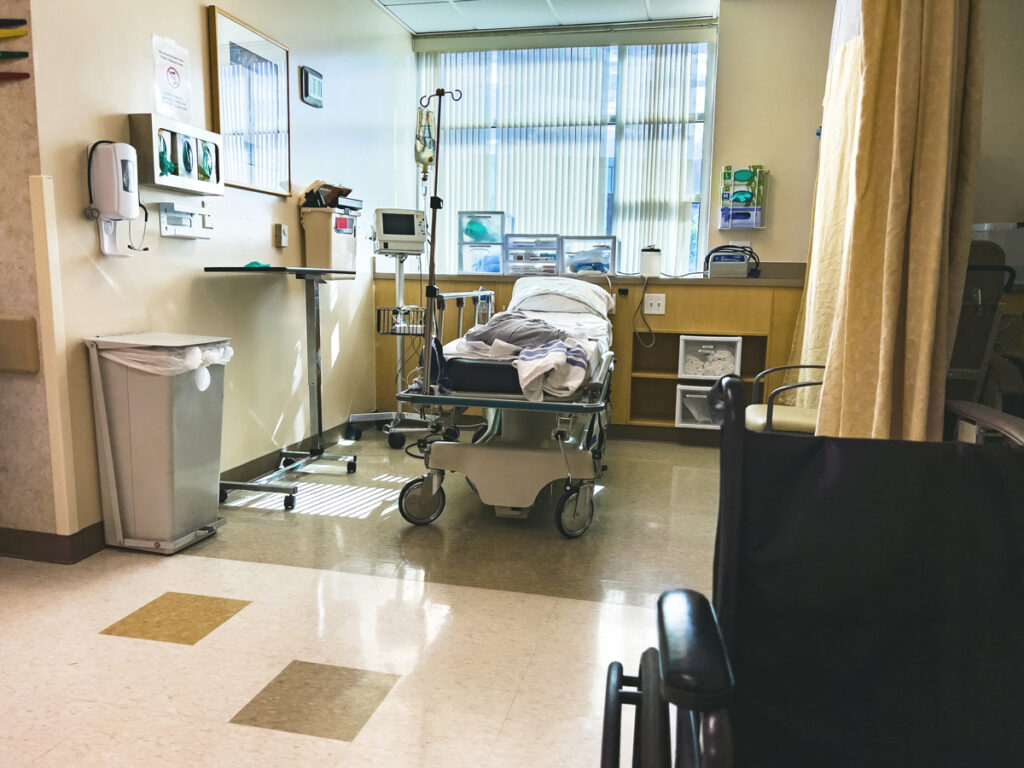Why rural hospitals are facing unprecedented financial pressures and workforce shortages.
February 2023 – The Journal of Healthcare Contracting
To understand just how different a rural hospital is from a metropolitan one, Larry Bedell said to picture a Friday night high school football game. Traditionally, mixed in with the crowd of spectators would be not just the nurses, technicians, front office staff and doctors of the local hospital, but the hospital executives as well. Patients and providers know each other on a first name basis. “It’s not just a job,” said Bedell, executive director for the National Rural Health Association (NRHA) Services Corporation.
Indeed, the stakes are personal for rural hospital leaders. And the margin for error is smaller. Because rural hospital margins are so tight financially, a bad decision could cost the community their facility. “And there’s not another facility on the next block, like in a metro area,” Bedell said. “I live in Kansas City, a mid-market town. I live within 10 miles of probably 25 hospitals. In a rural community, there’s usually not another hospital for over 30 miles. There’s not someplace else for those people to get care if anything happens to that facility. That’s quite a bit of stress if you care about that community.”
Unique challenges

Judging by recent headlines, rural hospital leaders are facing an incredible amount of stress in today’s marketplace. The American Hospital Association released a report this year highlighting the variety of causes that resulted in 136 rural hospital closures from 2010 to 2021, and a record 19 closures in 2020 alone. These include many longstanding pressures, such as low reimbursement, staffing shortages, low patient volume and regulatory barriers, as well as the continued financial challenges associated with the COVID-19 pandemic. Recently, expenses for labor, drugs, supplies and equipment have also increased dramatically, ultimately causing difficulties in maintaining access to care for people in rural communities.
“While many hospitals and health systems are facing unprecedented challenges, those faced in rural America are unique,” said AHA President and CEO Rick Pollack. “We must ensure that hospitals have the support and flexibility they need to continue to be providers of critical services and access points for patients and communities.”
Rural hospitals and health systems make up about 35% of all hospitals across the country and include critical access hospitals (no more than 25 acute care beds and more than 35 miles from the nearest hospital), frontier hospitals (six or fewer residents per square mile) and sole community hospitals (hospitals for Medicare beneficiaries in isolated communities), among other Medicare designations. Rural hospitals are major economic drivers, supporting one in every 12 rural jobs in the U.S. and contributing $220 billion in economic activity in their communities in 2020.
The NRHA, a nonprofit organization working to improve the health and well-being of rural Americans and provide leadership on rural health issues through advocacy, communications, education, and research, lists a wide-range of obstacles that rural hospitals face on its website, including:

Workforce Shortage Problems
- Ease of access to a physician is greater in urban areas. The patient-to- primary care physician ratio in rural areas is only 39.8 physicians per 100,000 people, compared to 53.3 physicians per 100,000 in urban areas. This uneven distribution of physicians has an impact on the health of the population.
- There are 30 generalist dentists per 100,000 residents in urban areas versus 22 per 100,000 in rural areas.
Socioeconomic Factors
- Rural residents tend to be poorer. On average, per capita income in rural areas is $9,242 lower than the average per capita income in the United States, and rural Americans are more likely to live below the poverty level. The disparity in incomes is even greater for minorities living in rural areas. About 25% of rural children live in poverty.
- People who live in rural America rely more heavily on the Supplemental Nutrition Assistance Program (SNAP) benefits program. According to the Center for Rural Affairs, 14.6% of rural households receive SNAP benefits, while 10.9% of metropolitan households receive assistance. In all, 1.1 million households receive SNAP benefits.
- Rural residents have greater transportation
difficulties reaching health care providers, often traveling great distances to reach a doctor or hospital.
Health Inequity
- More than 50% of vehicle crash-related fatalities happen in rural areas, even though less than one-third of miles traveled in a vehicle occur there.
- In rural areas there is an additional 22% risk of injury-related death.
- Rural areas have more frequent occurrences of diabetes and coronary heart disease than non-rural areas.
- Mental health creates new challenges in rural areas, such as:
- Accessibility: Rural residents often travel long distances to receive services, are less likely to be insured for mental health services, and less likely to recognize the illness.
- Availability: Chronic shortages of mental health professionals exist, as mental health providers are more likely to live in urban centers.
- Acceptability: The stigma of needing or receiving mental health care and fewer choices of trained professionals create barriers to care.
Future leadership
The single largest determinant for a rural hospital’s success is leadership, Bedell said. A couple of decades ago, the average tenure of a rural hospital CEO was 25 to 30 years. The hospital CEO often lived in the local town with his family, spent his or her entire career at the hospital and retired there. “That’s not the case now,” Bedell said. “That generation of leaders is retiring or has retired. Replacing them has become very difficult.” Last year alone, there was about 18% of rural hospital executive turnover, and 2022 could be worse, he said.
It’s difficult to find qualified executives for these hospitals for several reasons. First, rural hospitals are typically not flush with cash. Second, it’s hard to find a qualified executive willing to move with his or her family to an underserved area.
Still, there are several initiatives to try and make up for the shortfall in leadership among rural health providers. For instance, NRHA’s fellows program’s goal is to educate and develop a network of diverse rural leaders that will step forward to serve in key positions in the association, affiliated advocacy groups, and local and state legislative bodies with health equity as a main focus. NRHA also has developed training for current rural hospital executives, not just the CEOs, but CFOs, COOs, and even HR directors and board members. Several recruiting firms have taken measures to try and find qualified talent to move to those underserved areas in rural communities.
“But, it’s challenging, it’s very difficult,” Bedell said.
